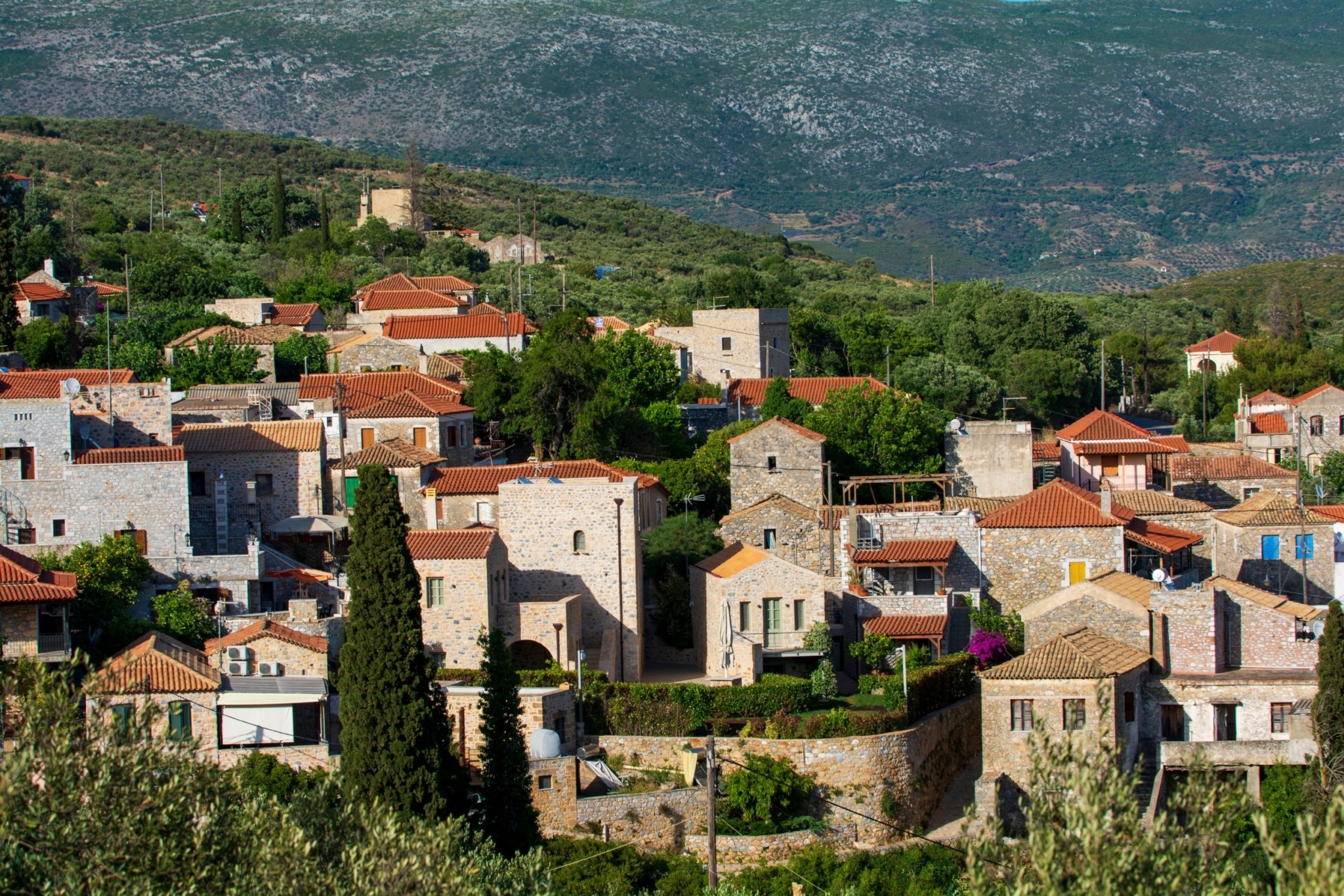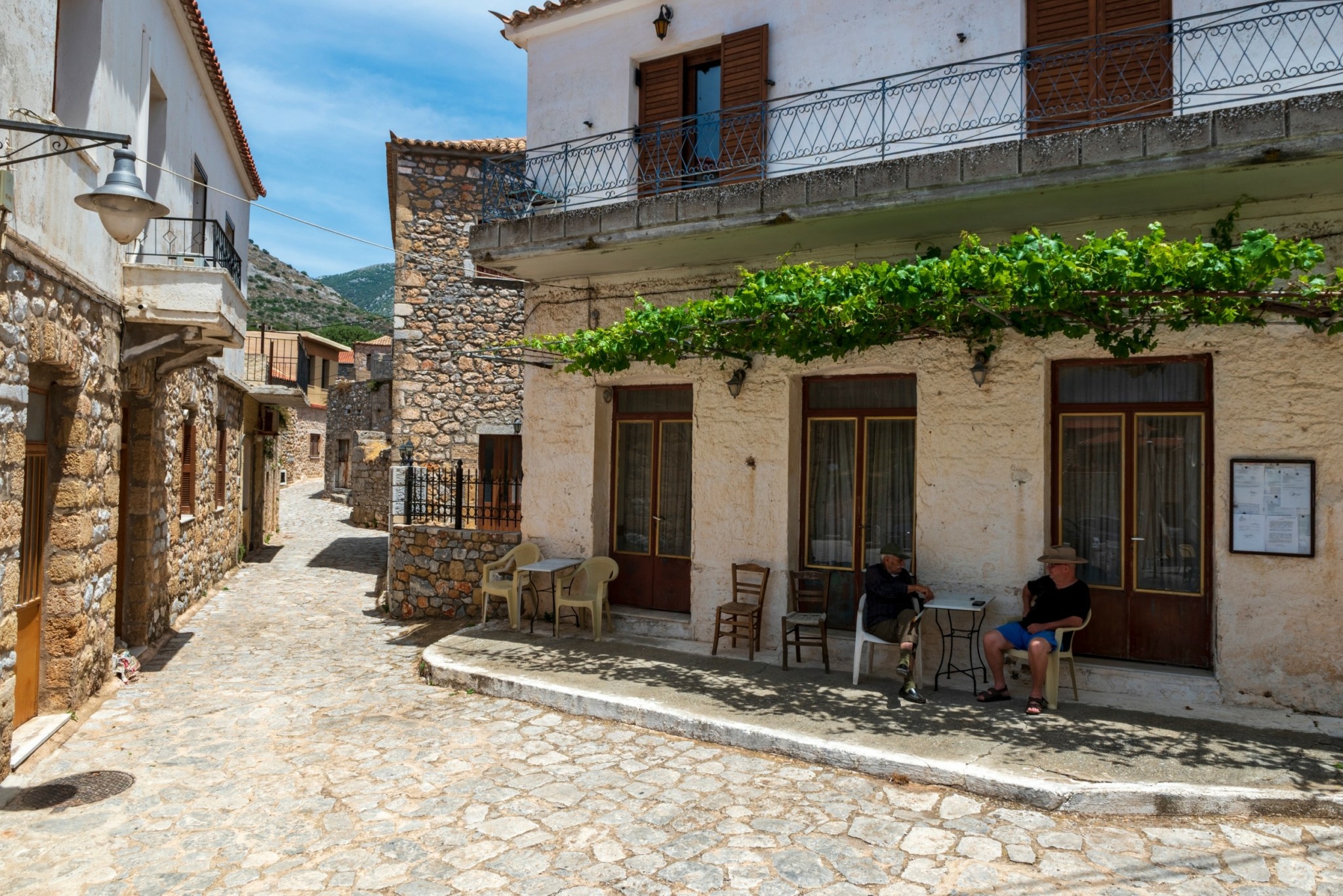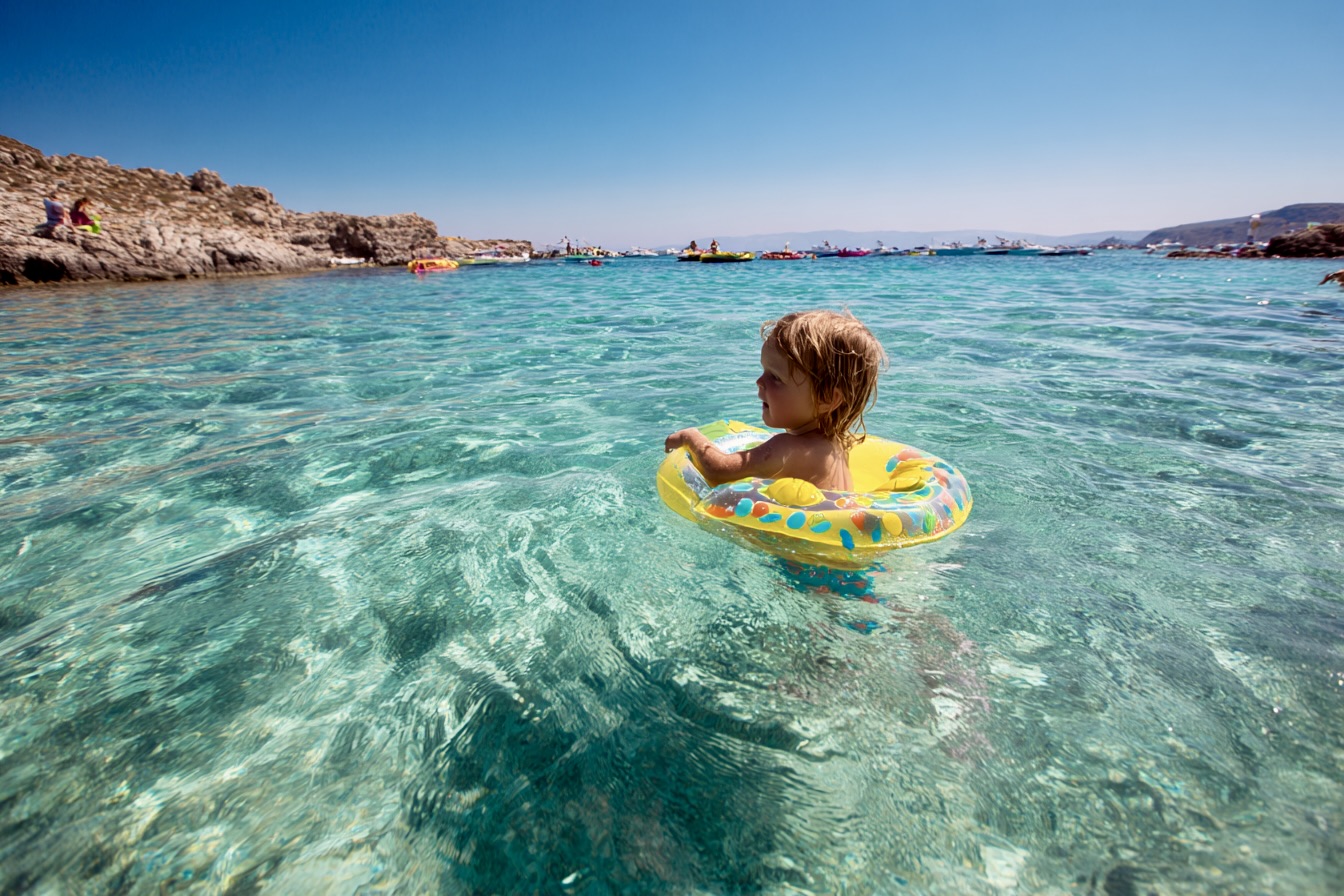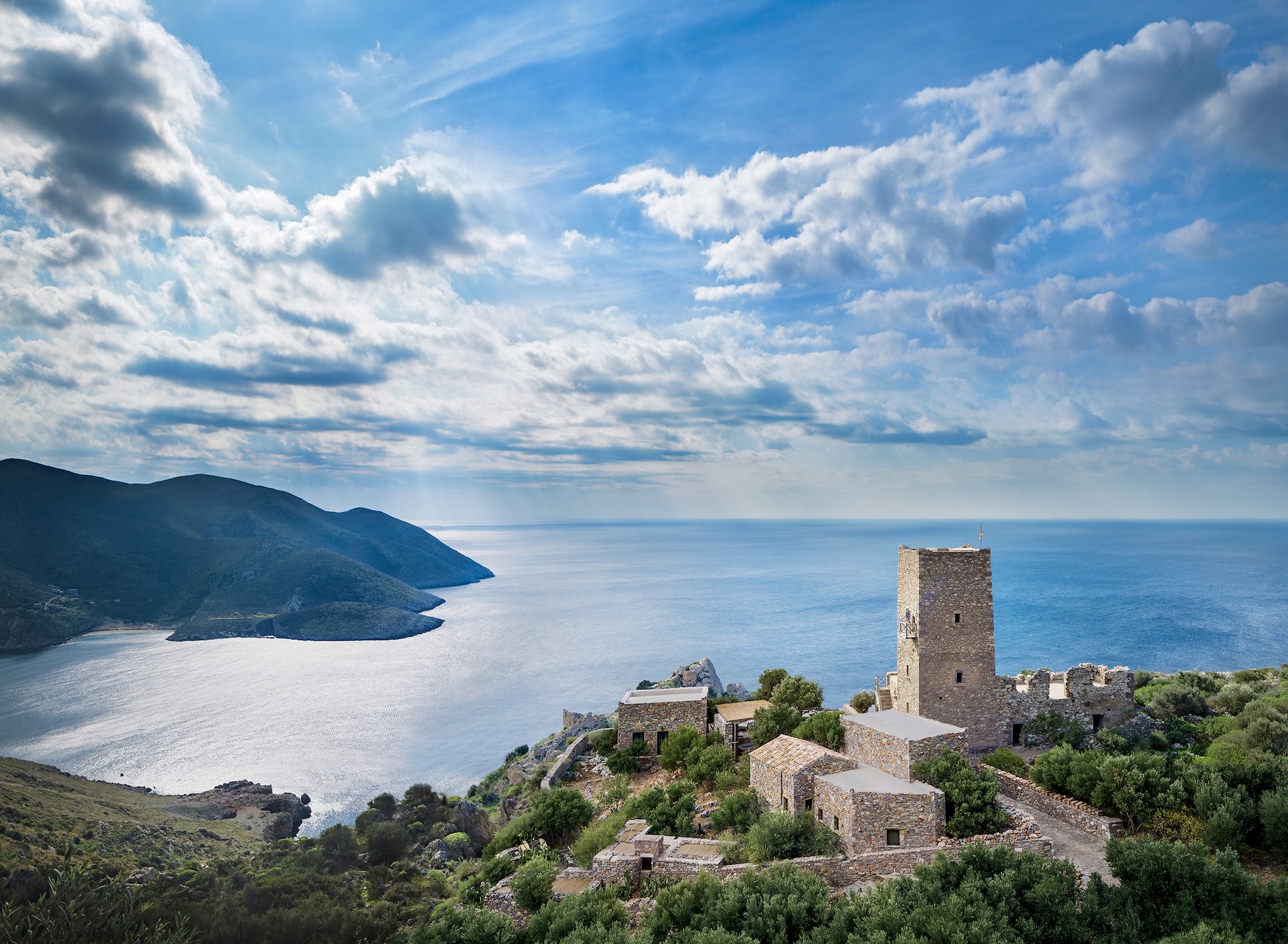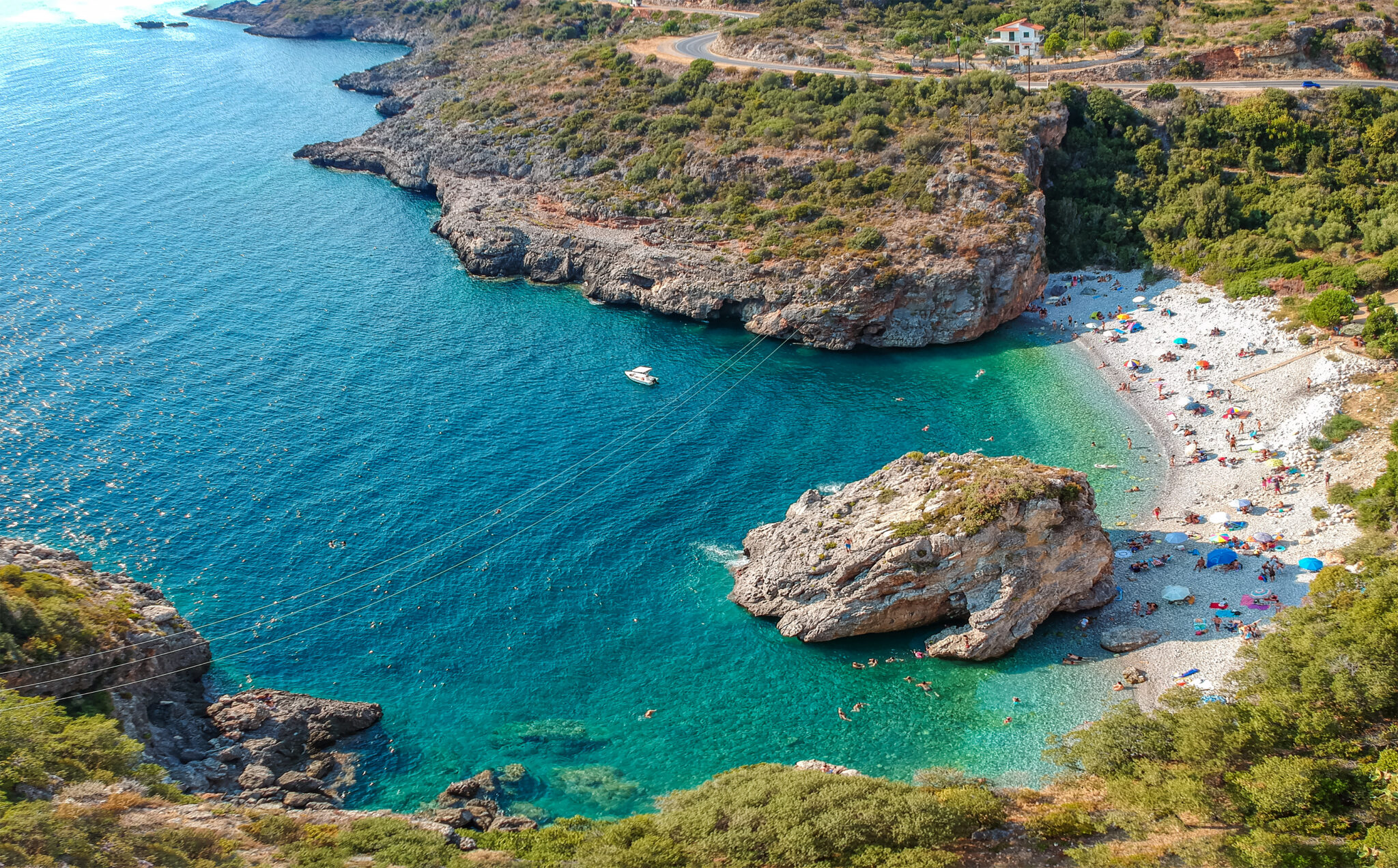“You don’t come a dime a dozen, you’re descendants of Napoléon!” Before we left for our pilgrimage to Mesa Mani (Inner Mani), my friend Chara encouraged me to definitely make a stop at Oitylo, since her grandmother, Mpika, short for Charalampia, née Papachristophilou, kept telling her again and again that her family descends from the Kalomerides (in Greek from the good place) family, who immigrated from Oitylo to Corsica and then changed their name to Buonoparte (good place in Italian) and hence Napoléon Bonaparte!
And since her grandmother was a high school graduate and a history buff, I promised we’d visit Oitylo and look into the issue in depth.
It is the first large village of Mesa Mani, in the northwest, near the borders with Messinia, and one that rewards the visitor, being a typical example of the architecture, with tower houses and cobbled streets. Stone is prevalent in every structure and building. The numerous, for the village’s size, churches catch the eye causing admiration for their ornate structures. Saint George’s Church, the Church of Taxiarches, and the great Church of Virgin Mary’s Dormition, that looms over the main square, are all very close together. From there you can take in the panoramic view of the large bay and of the waves ending their journey at Karavostasi and New Oitylo. In the summer the sandy beach that spreads between the two is the place to be, as well as the very good seaside taverns serving fresh fish. And if you want to explore the area walking, one great option is to follow the trail that starts at the village and reaches the gorgeous small late-Byzantine Church of Our Saviour’s Transfiguration, built on the ruins of an ancient temple with its very impressive Doric columns inside.
It’s true! History has left a mark everywhere you look in Mesa Mani. All you need is a desire to explore and a keen eye. Walking around Oitylo and seeing the Medici coat of arms, dated 1342, on a lintel is something hard to overlook! That was all the excuse we needed to start unravelling the thread of research and finding out if Napoléon did indeed have ancestry in Oitylo, a belief held not only by my friend’s grandmother, as I came to discover, but by many people even nowadays.
Apart from a branch of the powerful Medici family from Florence, around the same period, some members of the imperial Komnenos family of Trebizond immigrated to Oitylo. The famous Stephanopoulos family are descendants of the Komnemos family. According to the sources * “on October third, 1675, 430 members of the Stephanopoulos family and 300 people from other villages departed from Voitylo (Oitylo) and, on board the French ship ‘Saviour’, arrived in Genoa on January 1st, 1676. They disembarked in Corsica on March 14th, 1676.”
At first the Maniots (people of Mani) settled in the area of Paomia, but in 1730 they were forced to move (due to the conflict between the Corsicans and the Genoese) to Ajaccio, today’s capital of Corsica. In 1768 the Genoese sold Corsica to the French. A year later, on the 15th of August 1769, Napoléon the Great is born in Ajaccio, named Napoléon Bonaparte.
According to Dikaios Vagiakos, who is from the village Koita of Mesa Mani, and who served for many years as the director of the Historical Dictionary of the Greek Language of the Academy of Athens, and visited Corsica seven times between 1963 and 1970, in order to record the dialect of the settlers but also to study documents on the history of the Maniot settlement, in his book “The Maniots of Corsica”, one branch of the Stephanopoulos clan with the name Kalomeros left Corsica for Tuscany. There the name Kalomeros took on the Italian form Buonoparte. Later, someone from that clan returned to Ajaccio and became the founder of the Bonaparte family of Corsica. Regarding the claims about Napoléon is a descendant of this family, Dikaios Vagiakos emphatically states that “This of course is not true”.
*(Source: “Chronicle of the origin of the Stephanopoulos clan from Mani’’ ed. Grigoris G. Papadopoulos, based on the manuscripts of the priest Nicolaos Stephanopoulos in 1738. Published in 1865 at L. D. Villara’s printing house “Pandora”)



